Since the invention of the first compression ignition reciprocating engine in 1892 by German Engineer, Rudolf Diesel, diesel fuel has become the primary fuel for freight and delivery of goods. According to the U.S. Energy Information Administration, most diesel in the U.S. is produced in refineries from traditional crude oil. Until 2006, diesel fuel contained high levels of sulfur. Today’s diesel fuel is ultra low sulfur diesel (ULSD), a cleaner burning fuel. Diesel engines have also come a long way. Over 65% of all commercial vehicles are equipped with near-zero-emissions diesel engines resulting in much lower air pollution. While there are new replacement technologies being developed, diesel will remain the predominant technology running transportation for a long time.
Today, diesel fuel is more refined than a few decades ago. The hydrodesulfurization process used to remove sulfur makes it more susceptible to stability issues and aging. The blending of biodiesel in most sold in the U.S. means it is more likely to have a higher water content than straight, conventional diesel fuel. This means storing diesel fuel is more complicating, requiring a proactive three step approach to managing fuel and storage systems.
Three Step Approach to Managing Diesel Fuel Storage Systems
Step One
Equipment maintenance is step one which includes regular visual inspections of the system to identify any signs of water entry, equipment damage and corrosion. Water is the system killer. So, removing any water found is a major priority. If not removed, it will accelerate fuel aging, reduce the stability of the fuel, contribute to microbial contamination and damage your equipment. Corrosion is always a problem. The photos below show heavy corrosion most often associated with microbial contamination.
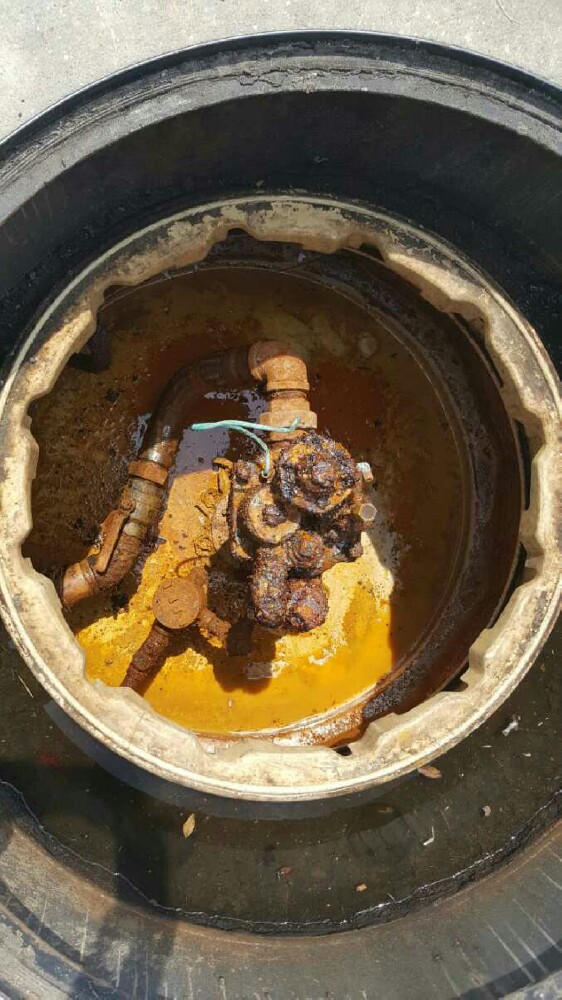

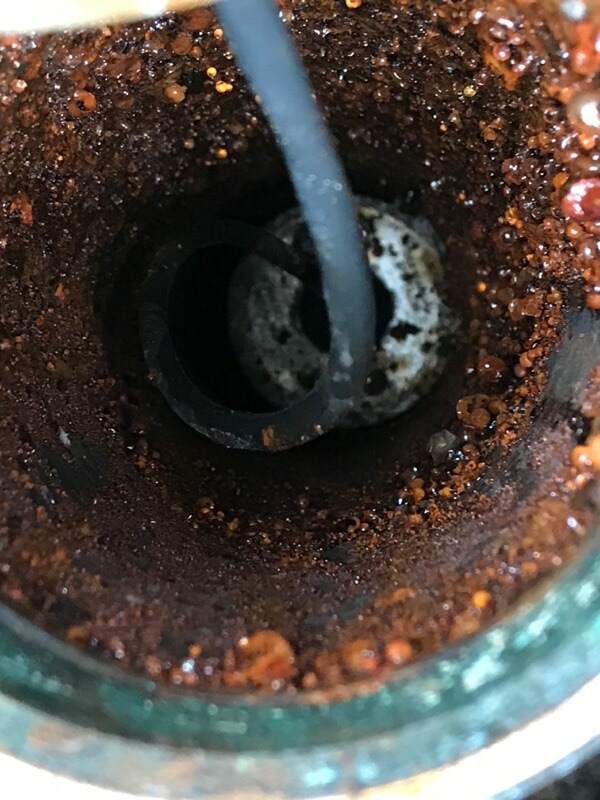
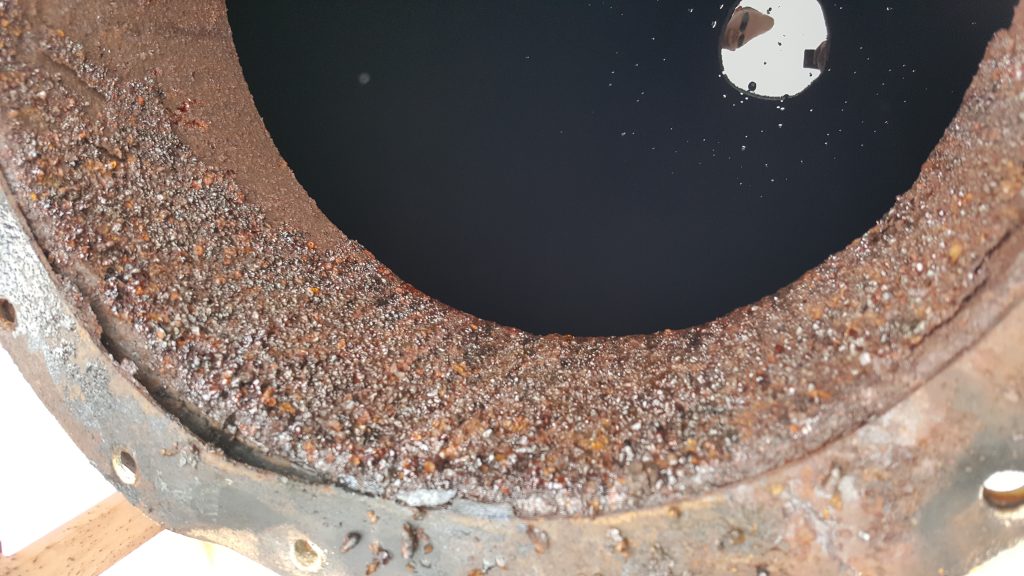
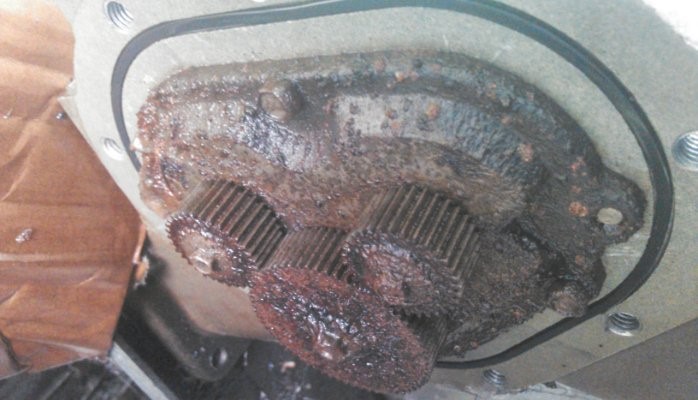
Using Hammond’s Corrosion Assessment Guide during your inspections can help to identify common problem areas.
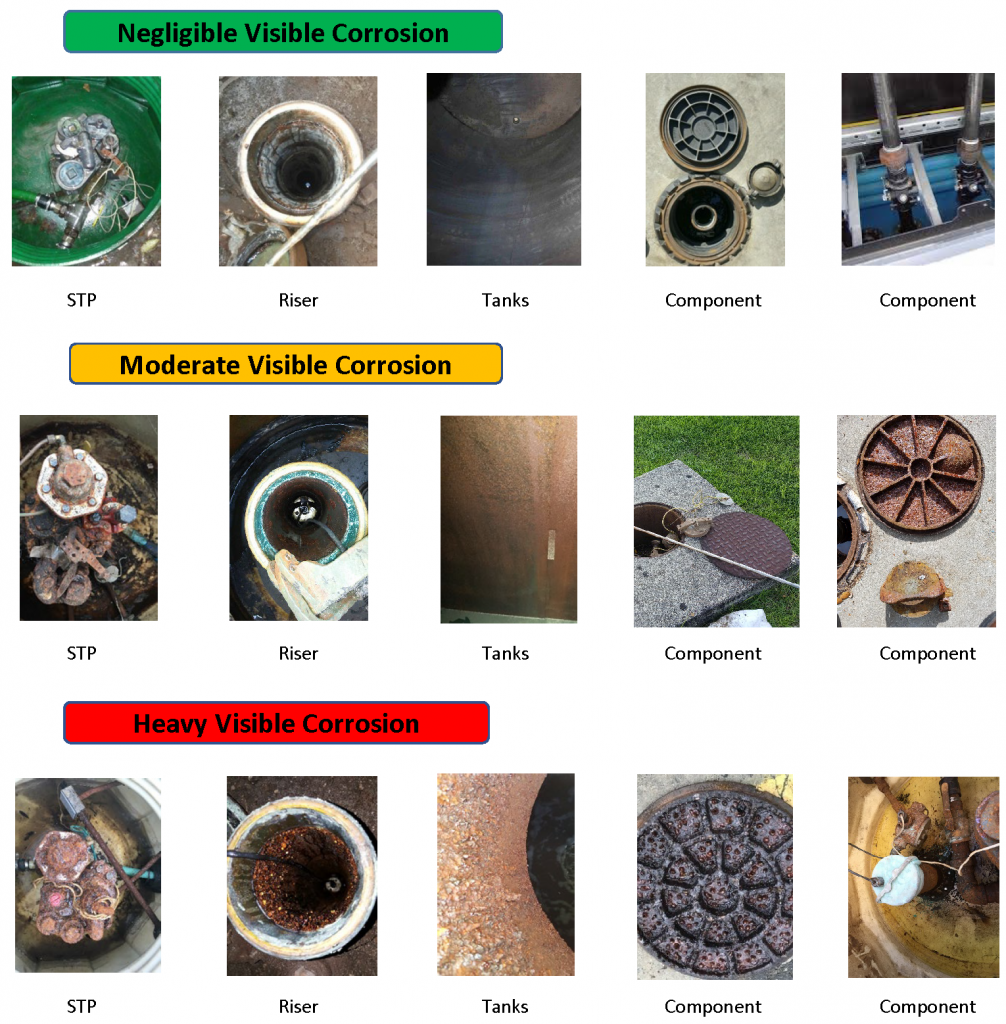
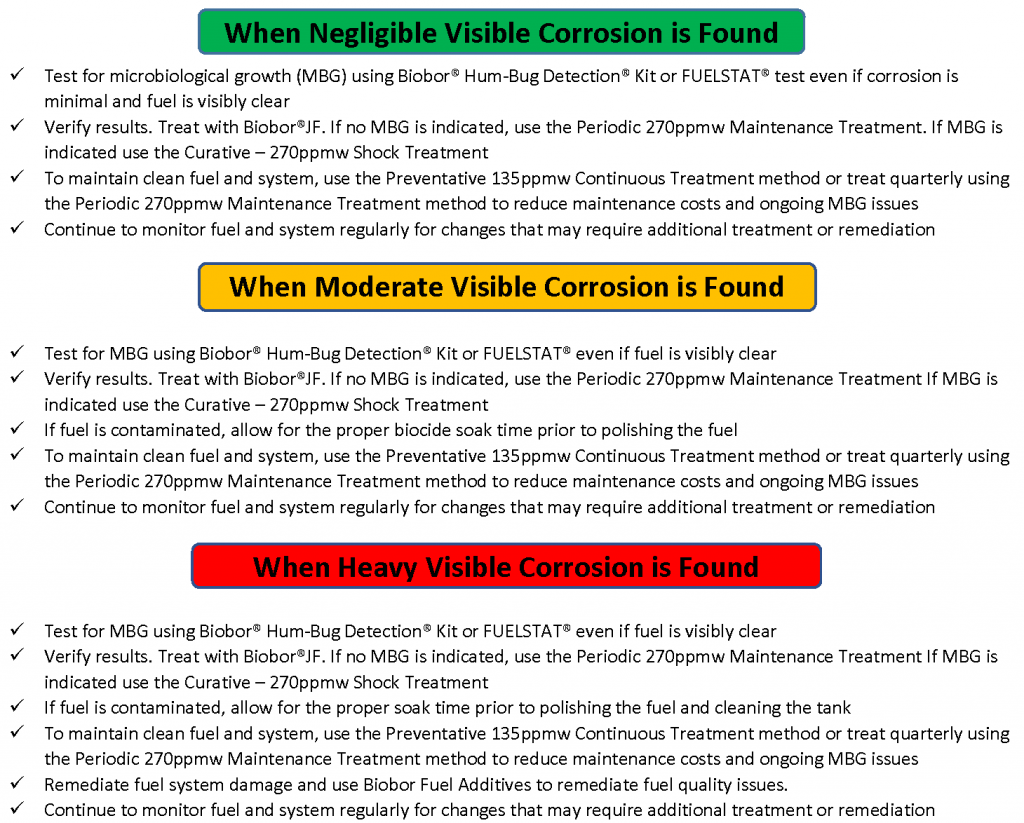
Step Two
Managing for fuel quality is step two which includes regularly sampling fuel for visual examination and testing if necessary. For long-term storage, it also includes the proper application of a fuel stability additive and a fuel biocide. There are no shortcuts to managing fuel. Microbial contamination and fuel stability are both common with long-term storage of diesel fuel.
The BP Fact Sheet states “The main issue with diesel fuel in storage is the formation of gums and sediments that can block filters. This is associated with darkening in the colour of the fuel. When stored under cover in sealed containers it will usually last for one year but it can last longer. The main problem with diesel fuel in opened containers is that moisture from condensation will create a favorable environment for fungus and bacteria that degrade the fuel. The simple solution is regular treatment with a biocide every six months when storing for lengthy periods.” BP also advises using a fuel stabilizer for extend periods of storage over two months. Using Biobor JF to prevent and eliminate microbial contamination along with Biobor DC to stabilize the fuel will provide the best possible protection available.
Water is the major culprit so if you find water, remove it immediately. Following the Hammond’s Visual Fuel Assessment Guide provides a good approach to managing fuel quality.
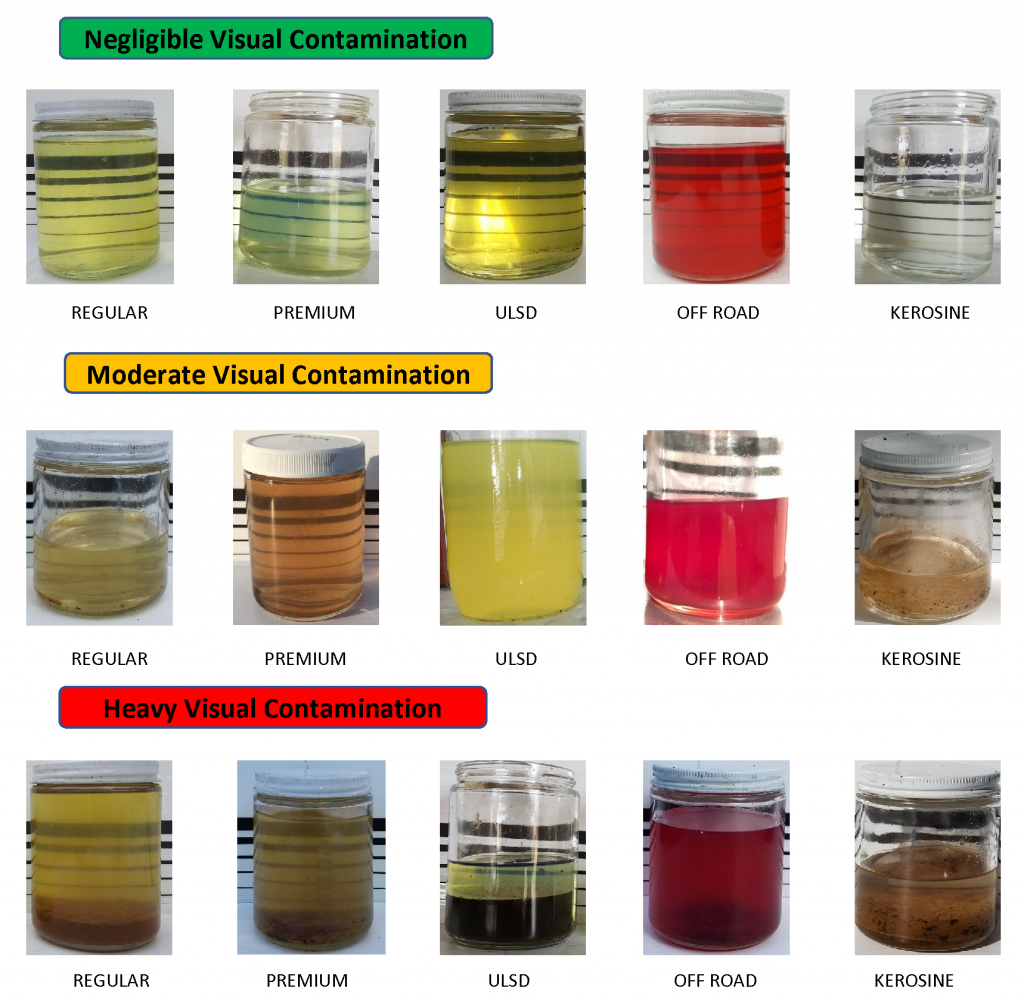
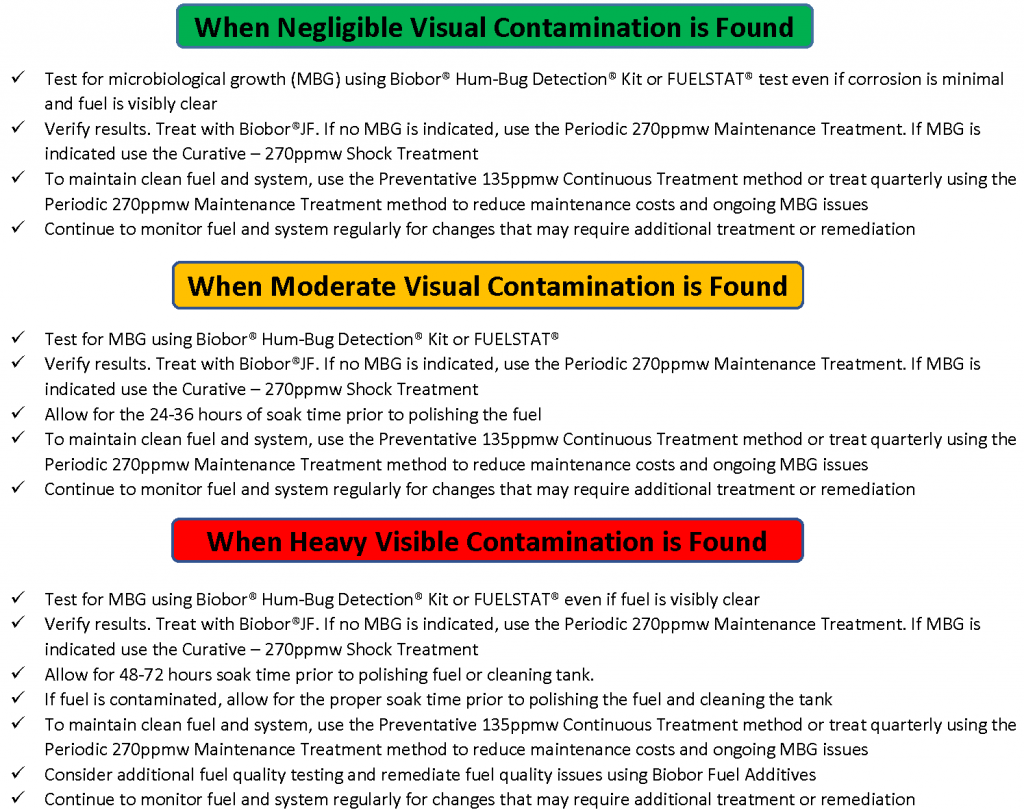
Regular fuel sampling is one of the most neglected aspects of managing a fuel system. It is important to pull more than one sample in a tank each time you perform your inspections. For more on proper sampling, check out our post, How to Find the Problem in Your Fuel Tank.
Step Three
Remediation is step three. If you find a problem immediately take care of it. Find water, pump it out. Find microbial contamination, treat the system with Biobor JF. Find severe contamination in the tank, have it cleaned and remember to treat your fuel with Biobor JF to ensure no microbes take over again. Find aged fuel, polish the fuel and use Biobor DC. Find corrosion, have it removed and find the source of the corrosion.
Tank and fuel cleaning should be done annually. A 10,000 gallon tank that takes an 8,000 gallon delivery each week will accumulate approximately 30 pounds of particulate contamination each year. Particulate contamination will harbor water and microbes, reason enough to have your tank cleaned annually. Apply Biobor JF quarterly to prevent future contamination.
Equipment maintenance, fuel management and remediation are all a necessary part of taking care of your fuel storage system. Neglect will cause you money, downtime and liabilities. Not sure how to begin, contact the Hammond’s team for help.
Follow BioborShare the Post








